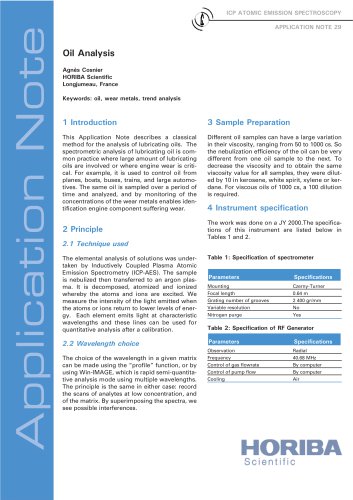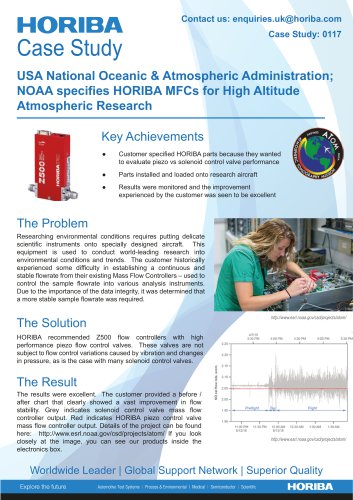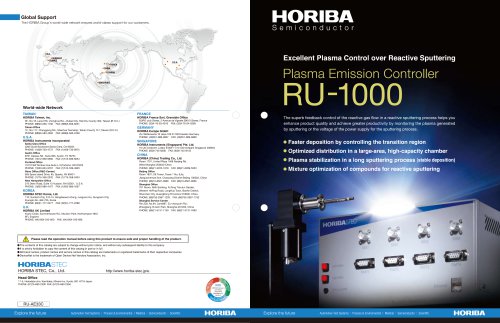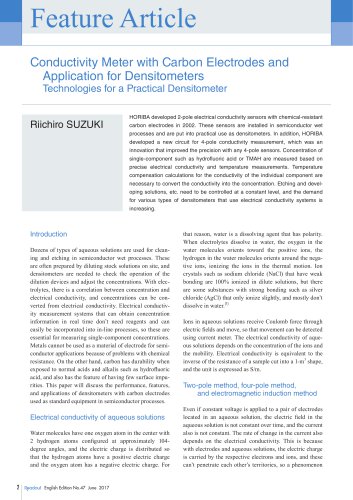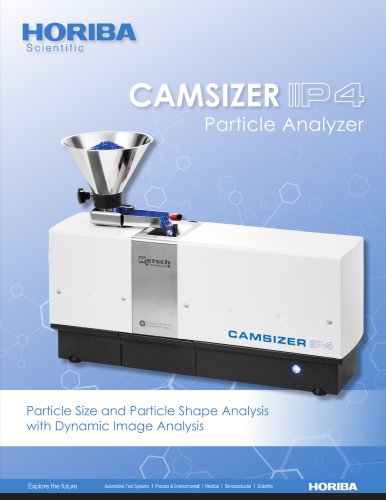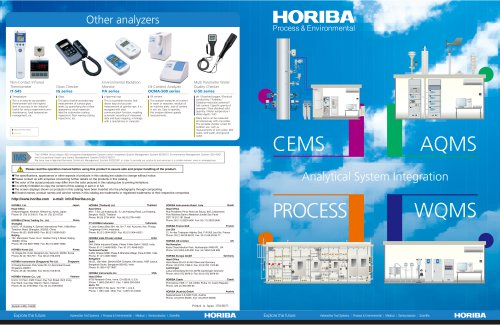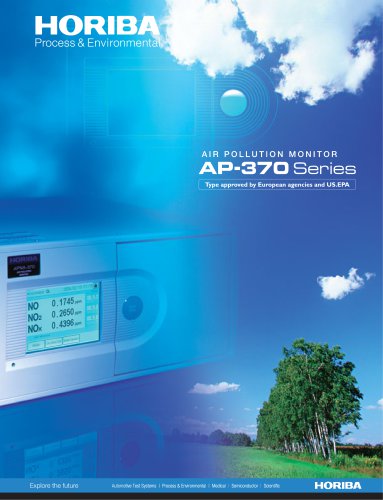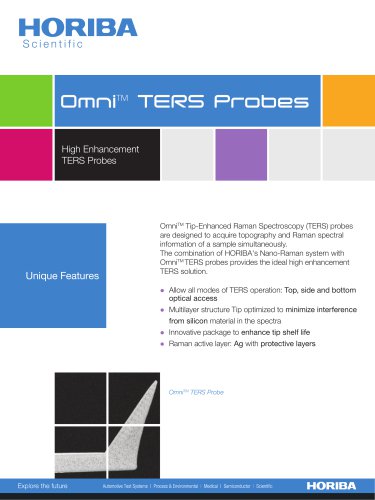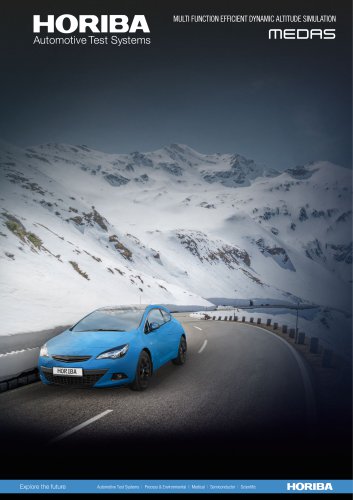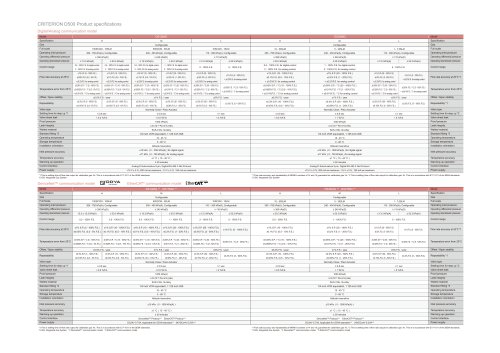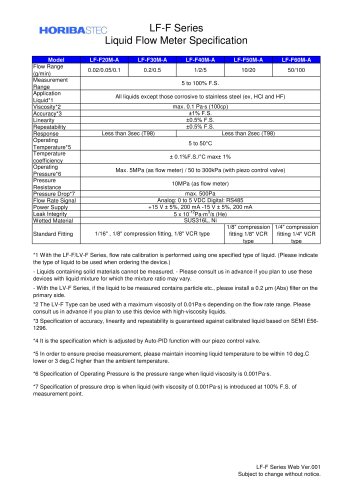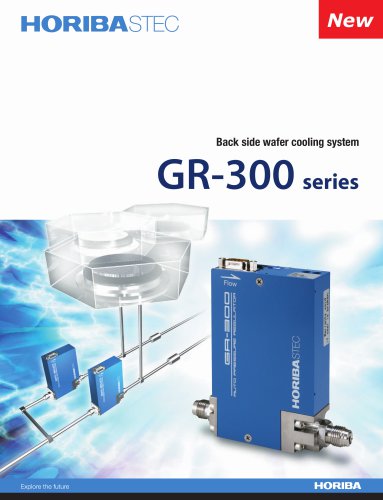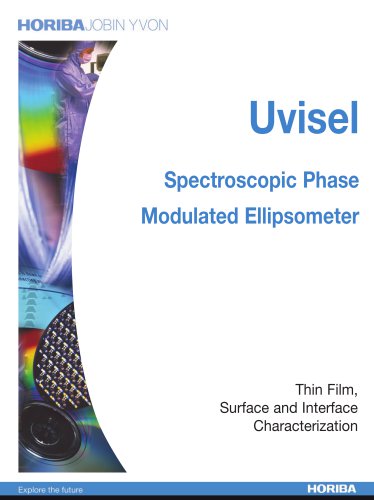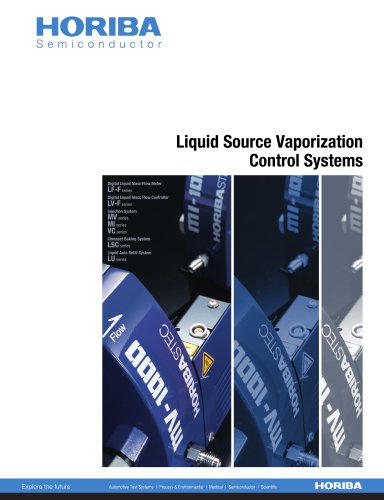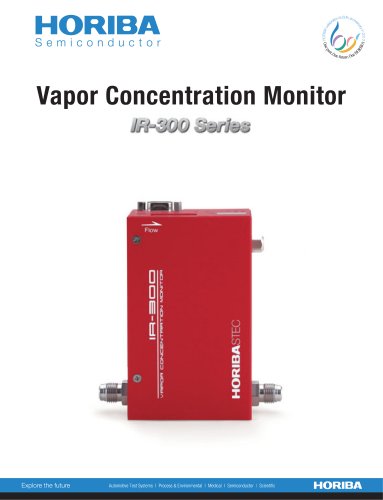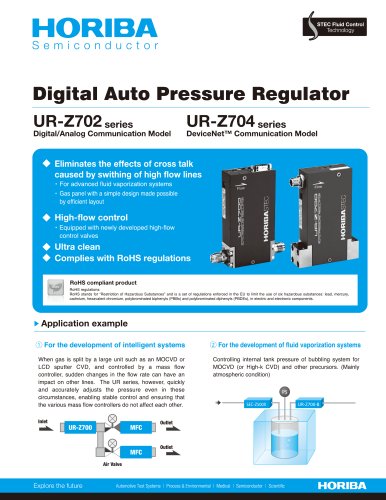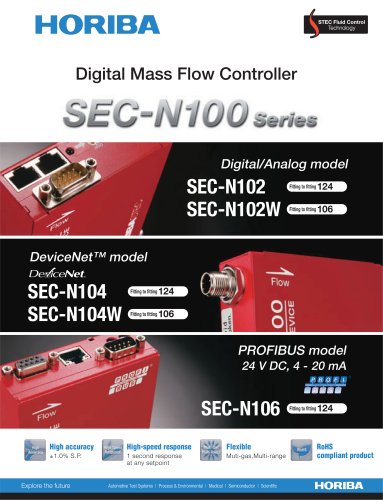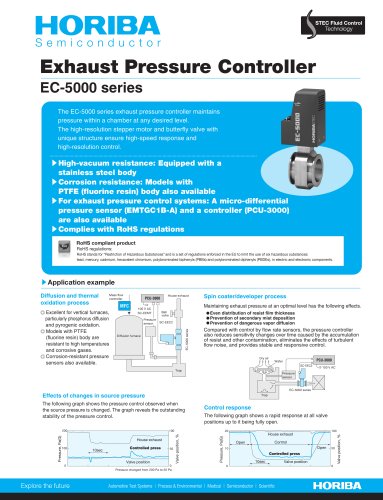 Website:
HORIBA STEC
Website:
HORIBA STEC
Group: Horiba
Catalog excerpts

ICP OPTICAL EMISSION SPECTROSCOPY ICP ATOMIC APPLICATION NOTE 29 Oil Analysis Agnès Cosnier HORIBA Scientific Longjumeau, France Keywords: oil, wear metals, trend analysis This Application Note describes a classical method for the analysis of lubricating oils. The spectrometric analysis of lubricating oil is common practice where large amount of lubricating oils are involved or where engine wear is critical. For example, it is used to control oil from planes, boats, buses, trains, and large automotives. The same oil is sampled over a period of time and analyzed, and by monitoring of the concentrations of the wear metals enables identification engine component suffering wear. Different oil samples can have a large variation in their viscosity, ranging from 50 to 1000 cs. So the nebulization efficiency of the oil can be very different from one oil sample to the next. To decrease the viscosity and to obtain the same viscosity value for all samples, they were diluted by 10 in kerosene, white spirit, xylene or kerdane. For viscous oils of 1000 cs, a 100 dilution is required. 4 Instrument specification The work was done on a JY 2000.The specifications of this instrument are listed below in Tables 1 and 2. 2.1 Technique used The elemental analysis of solutions was undertaken by Inductively Coupled Plasma Atomic Emission Spectrometry (ICP-AES). The sample is nebulized then transferred to an argon plasma. It is decomposed, atomized and ionized whereby the atoms and ions are excited. We measure the intensity of the light emitted when the atoms or ions return to lower levels of energy. Each element emits light at characteristic wavelengths and these lines can be used for quantitative analysis after a calibration. Table 1: Specification of spectrometer Observation Frequency Control of gas flowrate Control of pump flow Cooling Radial 40.68 MHz By computer By computer Air The choice of the wavelength in a given matrix can be made using the “profile” function, or by using Win-IMAGE, which is rapid semi-quantitative analysis mode using multiple wavelengths. The principle is the same in either case: record the scans of analytes at low concentration, and of the matrix. By superimposing the spectra, we see possible interferences. Mounting Focal length Grating number of grooves Variable resolution Nitrogen purge Table 2: Specification of RF Generat
Open the catalog to page 1
ICP ATOMIC EMISSION SPECTROSCOPY 5 Operating conditions The operating conditions are listed in Table 3 below. Table 3: Operating conditions Parameter Condition RF Generator power Plasma gas flowrate Auxiliary gas flowrate Sheath gas flowrate Nebulizer flowrate Sample uptake_ Type of spray chamber Argon humidifier_ Injector tube diameter Table 5: High calibration standard Element High calibration 7 Limits of detection The limits of detection are calculated using the following formula: 6 Wavelength selection and analytical conditions Table 4: Wavelength selection and analytical...
Open the catalog to page 2
ICP ATOMIC EMISSION SPECTROSCOPY Table 6: Limits of detection Because the aim of the analysis lubricating oils is to monitor the oil of an engine and get a trend analysis over time, the best accuracy is not required. The trend analysis allows the analyst to see that the oil is changing and when the engine needs stripping down before a catastrophic failure. The use of the internal standard is not required because the results are only compared to previous results. The procedure is thus very simple: new two point calibration each time the sample is analyzed and dilution of the samples by...
Open the catalog to page 3All HORIBA STEC catalogs and technical brochures
-
GR-300 Series
1 Pages
-
1000M Series
2 Pages
-
ru1000
4 Pages
-
HF HD-960L
5 Pages
-
CVS-ONE Brochure
4 Pages
-
CEMS
4 Pages
-
Cathodoluminescence H-CLUE
5 Pages
-
Cathodoluminescence F-CLUE
5 Pages
-
HE-960HC
5 Pages
-
CAMSIZER X2 Brochure
12 Pages
-
CAMSIZER P4 Brochure
12 Pages
-
Brochure-TPNA-500
6 Pages
-
AP-370 Series Brochure
12 Pages
-
OMNI TERS Probes
2 Pages
-
NanoRaman Brochure
7 Pages
-
51 series Brochure
6 Pages
-
VULCAN Evo
4 Pages
-
MEDAS
8 Pages
-
OBS-ONE GS
6 Pages
-
MEXA-ONE Brochure
26 Pages
-
CRITERION D507 Series
3 Pages
-
Mass flow Controller & Meter
2 Pages
-
Back number of CSR Reports
13 Pages
-
HORIBA Report
86 Pages
-
Soap Film Flow Meter
1 Pages
-
Analog pressure regulator
1 Pages
-
MI/MV
1 Pages
-
LV-F series
1 Pages
-
LF-F series
1 Pages
-
Criterion, D200 series
16 Pages
-
Pressure Controller
8 Pages
-
SEC-Z500MGX
16 Pages
-
Fluid Controle Equipment
4 Pages
-
Rasidual Gas Analizer
6 Pages
-
Vaporizers
8 Pages

